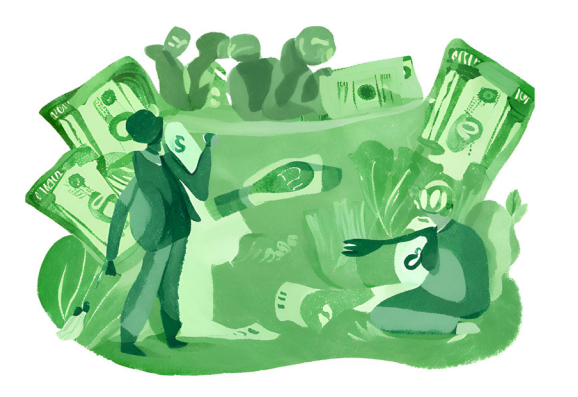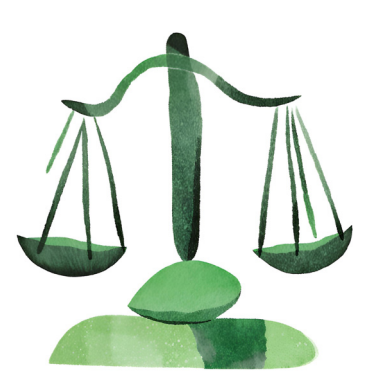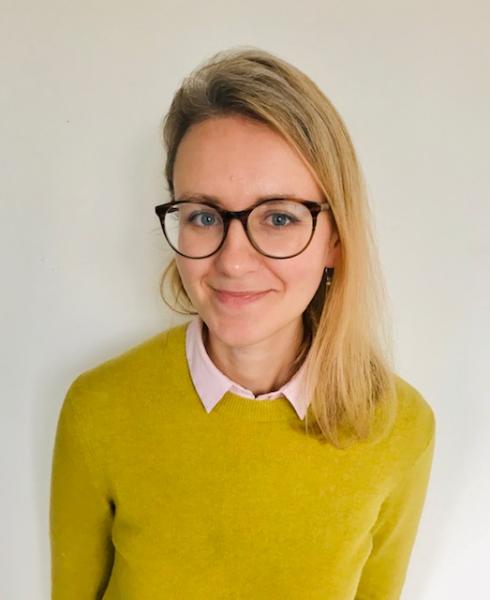Before the COVID-19 pandemic, the cultural and creative industries (CCI) were a significant contributor to Europe's economy. According to various studies, the CCI accounted for 4.2-4.4% of the continent's GDP. In 2018, the CCI were the third-largest employer in the EU, providing jobs for over 7.6 million people. However, the CCI was severely impacted by the pandemic. Revenues, performances, and new productions dropped by around 50% in the first half of 2020 compared to 2019, highlighting the fragility of these sectors.
The arts and culture played a crucial role in supporting people's well-being during this challenging period. Studies found that engaging in receptive cultural activities, such as listening to music, watching films, and participating in creative pursuits, helped individuals cope with stress and anxiety, experience beauty, and reflect on their lives. In contrast, the lockdowns revealed the structural weaknesses that artists face in their professional and everyday lives. This led to a recognition of the arts' broader contribution to society and opened discussions about improving the working conditions for artists and creative professionals.
On the European level, the Parliament has been pushing for a consolidated EU-wide approach to ensuring fair working conditions in the arts. But on the national level, things look very different from country to country concerning social security, recommended fee levels for various art disciplines and professionals (if they exist) and the overall working and living conditions for artists.
“The COVID-19 pandemic has shone a light on the precarious nature of many arts and cultural professions. Policymakers are increasingly recognising the need to take a more systemic approach to ensuring sustainable working conditions in the cultural sector” says Elena Polivtseva, Independent cultural policy researcher based in Brussels, and co-founder of the Culture Policy Room. She is also a Creative FLIP Expert researcher on working conditions and she is working on the This is How We Work platform.
She authored the new IETM’s report titled "Fair Pay in the Arts: The Talk of the Town or the Elephant in the Room" which sheds light on the complex landscape of pay practices in the arts and culture sector across different countries. In the report, Polivtseva explores the roles public funders, artists, unions, and institutions play in promoting and enacting fair pay policies and practices.
The notion of “fair” pay across different countries and art disciplines is not easy to define. As one of the voices cited in the report put it :
‘Making hard and fast rules around who should pay what is impossible. Does it have to do with company longevity? Budget size? Percentage of that budget that goes to artists? How many people do you employ? Singling out any one company is wildly unfair; few are blameless. But no nonprofit is swimming in cash. ‘Living wage’ is equally sticky. Living for whom? A single person? Married with kids? Seven roommates? What are artists entitled to, as a quality of life? Do they deserve to take a vacation once in a while?
The IETM report underscores the need for a holistic approach, involving collective bargaining, government policies, sector-wide debate on the notion of artistic labour, promoting artists as workers to the rest of society, and sufficient funding, to drive meaningful and sustainable change towards fair pay practices in the arts. It calls on all stakeholders to work collaboratively to address the complex challenges and ensure that cultural workers are properly valued and compensated for their vital contributions. The broader framework in which this discussion is taking place explains all too well why this is an important discussion to make.
--
“Navigating the realm of artists’ working conditions is like exploring a colourful mosaic of concerns. From social security to labour relations, and artistic freedom”
--
Q: Can you provide some good examples of arts councils or ministries that have implemented effective systems to benefit artists and producers?
A: One of the standout cases is Austria, where the government has taken proactive steps since 2020. They calculated the total amount of funding needed to ensure all artists and arts workers are paid at recommended minimum fee levels. This funding has steadily increased each year, growing from €6.5 million in 2022 to €10 million in 2024.
The "fairness process", as it's called, has involved promoting fair pay principles at both the national and regional levels. In some regions like Vienna, fair pay has been integrated as an explicit funding criterion, while in others it has been more of an aspirational goal. But overall, this multi-year commitment has helped raise awareness among artists about their right to fair remuneration.
The report suggests this systemic approach in Austria has made it difficult to revert to previous underpayment practices. Artists are now more organised and empowered to request fair pay upfront when planning new projects, rather than simply accepting whatever budget is available.
Other government agencies, like those in the UK and New Zealand, have also incorporated fair pay recommendations or expectations into their funding guidelines. However, the link between these policy statements and actual increases in public investment is not always direct.
In countries where collective bargaining by artists and arts workers is weaker, declarative statements by funders have less impact. Sectors with robust union representation tend to fare better in terms of establishing and enforcing fair pay standards.
Q. So what would be the key to unlocking a “fair” pay? How should we understand the notion of fair pay in different countries?

A. The key seems to be a multi-faceted approach that involves the state, arts institutions, artists, and the broader public working collaboratively. Declarative policies from funders are helpful but need to be backed by sufficient resources and commitment from all stakeholders to drive real change.
When it comes to specifics on how to define "fair pay" in a cross-border setting, the report highlights that this is an area of ongoing debate and experimentation. There's no universal formula, as context-specific factors like job descriptions, work hours, collaboration models, and national economic conditions all play a role. On an international level, the focus should be on establishing transparent processes, a fair definition of what artists and labour entail, and shared principles rather than rigid pay scales.
Q: Have you come across examples in your research where ministries, governments, and councils have taken into account not just minimum wage, but also the broader working conditions, sustainability, and quality of work for artists and arts workers?
A: It’s true that the minimum wage, while crucial, doesn't necessarily address the full range of challenges facing arts professionals. We can observe some interesting examples of more holistic policy approaches emerging in a few countries. For instance, Spain recently introduced a "status of the artist" law that tries to tackle issues like taxation, social security, and contracting altogether.
Similarly, Portugal has developed legislation that looks at the artist's working status more comprehensively. Romania has also passed new laws that aim to consolidate different elements that impact the ecosystem for cultural professionals.
The key insight here is that when you address these various aspects - from pay and benefits to contract structures and funding models - in an integrated way, it creates a much clearer framework for artists to understand their rights.
Oftentimes, the problem is that different policies and regulations are siloed, leading to contradictions or gaps that artists have to navigate. So these more holistic legislative approaches seem to be a positive trend, even if they are not yet that many across Europe so far.
--
"The minimum wage is an important baseline, but the real challenge is building an environment where artistic work can thrive in the long run. This includes proper social protections, realistic working hours, and a recognition of all the "hidden" labour that goes into creative production."
--
Q: Have you identified any particularly innovative approaches or practices that public or private funders are using to address the issue of fair pay?

A: Well, one new idea that I've touched on already is introducing the fair pay principle backed by appropriate funding increases. Whenever you establish new rules or policies around fair pay, it's essential to also have a sustainable budget in place to properly implement and support those changes.
I think the exercise of actually calculating how much extra public funding would be needed is an essential practice, but it's not something that has been done in many countries yet. The report cites the example of Austria, as I mentioned already, where they've done this kind of analysis and are increasing arts funding to meet recommended standards.
Another interesting model is what they've done in Australia with the "Creative Workplaces" initiative. This serves as a kind of connector between the cultural sector and all the various rules, regulations, and information that artists need to navigate. In many countries, one of the challenges is that the information is often there, but it's not well consolidated or translated in a way that's accessible for artists.
The Netherlands has the Fair Practice Code that was developed collaboratively by the sector itself, and then the government incorporated it into its funding policies. So if you want to access public money, you have to abide by the fair principles outlined in that code, as stated in the government funding guidelines.
So while these ideas may not be radically innovative, I do think they represent important steps towards more systematic and collaborative solutions to the fair pay challenge.
Q: Can you elaborate on the main stakeholders involved in fair pay in the arts and their respective roles? How are public funders, artists, unions, and institutions working to promote and enact fair pay policies?
The key message of this report is that simply having a recommendation on fair pay in funding programs is not enough on its own. For a profound change, it's also not enough to have artists and unions advocating for fair pay. Rather, the entire ecosystem of stakeholders: from funders and policymakers to arts institutions and the public - needs to be aligned and committed to making fair pay a sustainable practice.
If a funder defines fair pay as a funding recommendation but the arts organizations they support are not able or willing to pay fair wages, or if artists continue to accept underpayment, then the recommendation alone will not create real change.
Similarly, even if some artists are pushing for fair pay, institutions might not be able to or motivated to change how they structure their programming, budgets, and operations, if this is not promoted by policy-makers.
So this report emphasizes the need for a truly united, systemic approach involving all the key players - the state as both funder and policymaker, the arts organizations as employers, the artists themselves, the unions, and the broader public that understands and appreciates artists’ work.
—-
*IETM is one of the oldest and largest international cultural networks, representing the voice of over 500 member organizations and individual professionals working in the contemporary performing arts worldwide.











